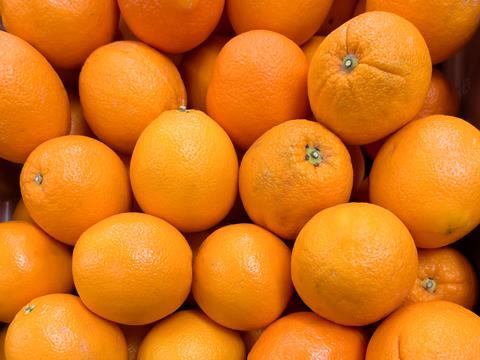Citrus study, which is the first of its kind, characterises Australian oranges at both a national and regional level
Through an Agriculture Victoria Food to Market programme, Citrus Australia has conducted a first-of-its-kind study to characterise Australian oranges at both a country and regional level, using laboratory testing of trace elements and isotope ratios.

The key goal of the project was to provide an internationally accepted laboratory traceability method that addressed two key questions.
The questions covered whether using trace elements or isotopes could determine if the origin of an orange was from Australia or another country, and if using the same techniques could differentiate place of origin between the five Australian growing regions.
According to Citrus Australia, the project successfully answered ‘yes’ to both questions.
Isotopes and trace elements in agricultural products such as fruit are derived from the soil, and differ depending on local geology, climatic and environmental conditions, and agricultural practices.
Isotope ratios and trace elements provide a form of laboratory identification at the atomic level, specific to a particular product and region that cannot be tampered with or altered.
The National Isotope and Trace Element (NITE) project collaborated with GNS Science, New Zealand, to analyse trace elements and isotopes of Australian Navel oranges to see if their origin could be verified.
“Once you remove all the labels from an orange, you can still find out where it’s from and it’s because of these intrinsic atoms that are infused into the orange you can’t tamper with, you can’t add to them or take them away,” explained Karyne Rogers, senior environmental scientist at GNS Science.
“They’re locked in there so the orange never lies.”
The project was conducted with Australian and competitor country fruit from the harvest seasons of 2021 and 2022.
When using a combination of trace elements and isotopes in this study, Australian oranges were able to be discriminated from other countries at a rate of 97.3 per cent.
Oranges from Australian regions could be discriminated from each other at a rate of 92.3 per cent.
“We found that there were key trace elements and isotopes that clearly characterised Australian oranges,” said Nathan Hancock, CEO of Citrus Australia.
“This is helpful to know that in a crisis when other traceability mechanisms need extra evidence, are not available or have been tampered with, we can show proof to verify the origin of the fruit.
“In the future Citrus Australia hopes to build the NITE dataset by adding more data from around the country and more variation on the varieties too,” he continued.
“We may identify growers that are interested in characterisation of their own fruit as well as entering into collaborative studies with global partners or peak bodies to add to the dataset and strengthen citrus traceability around the world,” said Hancock.
Citrus Australia said that limitations of isotope and trace element testing include the expense, time and analytic expertise involved in creating the data points.



